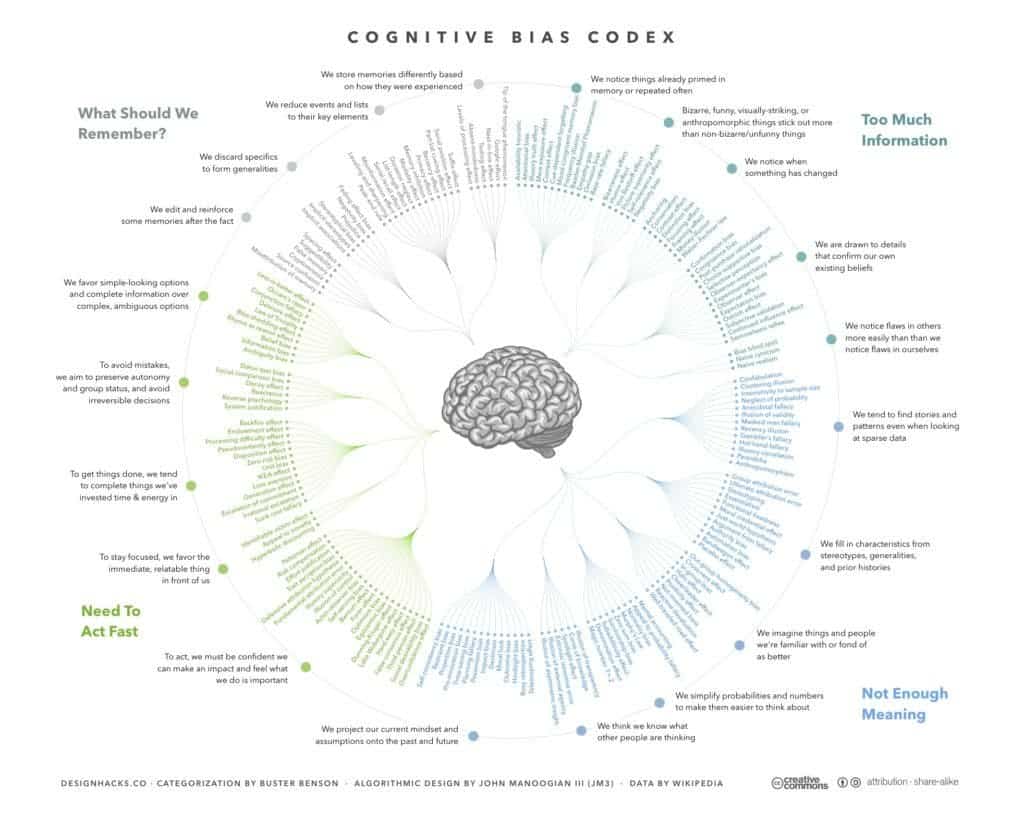
Our waking existence is packed with all sort of events happening at a fast pace around us. To navigate this complex environment, which involves relationships with other people as well, the human brain has adapted all sorts of mental shortcuts absent which our lives would’ve been virtually impossible to manage. The same shortcuts, however, lend us cognitive biases — systematic patterns of irrational thinking and behaviour.
In a post published on Medium, Buster Benson did a great job of cataloguing the most common 175 biases into 20 groups.
“I made several different attempts … and eventually landed on grouping them by the general mental problem that they were attempting to address,” Benson wrote. “If you look at them by the problem they’re trying to solve, it becomes a lot easier to understand why they exist, how they’re useful, and the trade-offs (and resulting mental errors) that they introduce.”
Later, a reader turned Benson’s spreadsheet into a marvellous chart that gives a visual overview of all these reason-shortcircuits. These include, for instance, the bandwagon effect (support an idea or person simply because the masses say so), the blind spot (seeing logical flaws in other people’s thinking more than we do our own) or the oh-too-common confirmation bias (makes us attuned to evidence that supports an established worldview, even if that means cherry picking).
So, pay close attention to this map. We’re all human and it’s likely we’re never going to be able to completely free ourselves of cognitive bias — but we can definitely minimize them as long as we know how to spot them.


